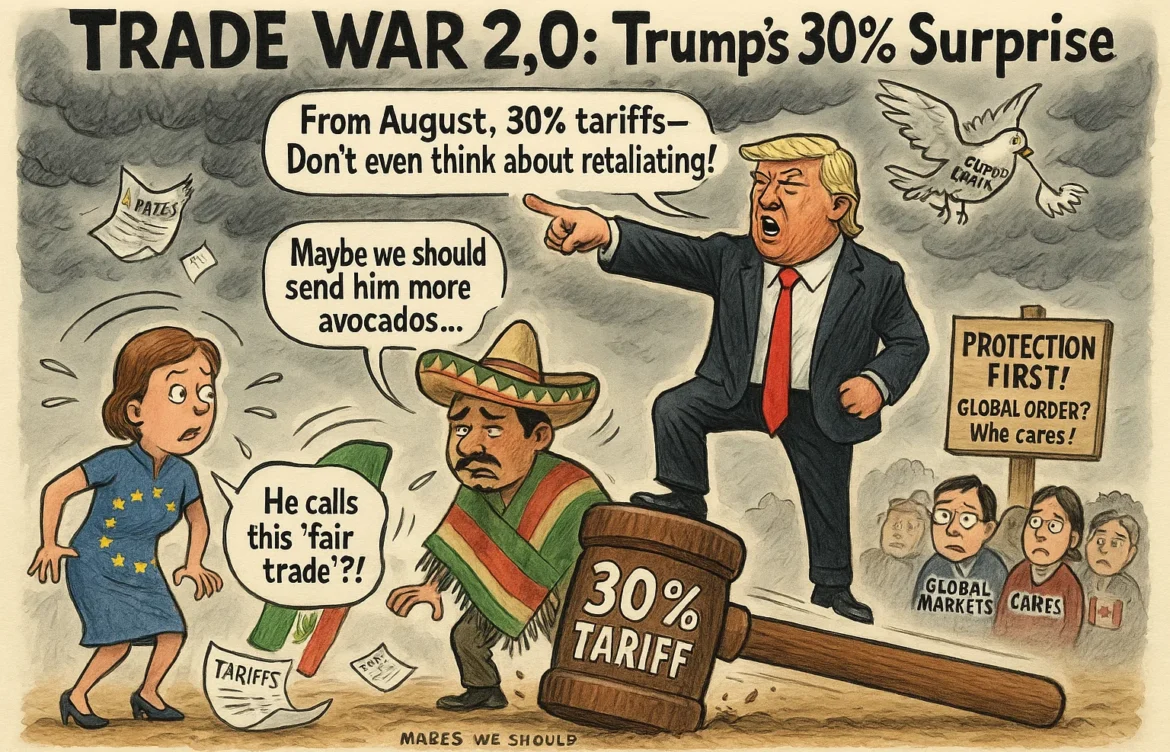
Trump Announces New 30% Tariffs on the EU & Mexico — What Could Happen Next?
President Trump has declared that starting in August, the U.S. will impose 30% tariffs on imports from the European Union and Mexico. He also warned both parties against retaliation.
What might unfold, and what are the likely consequences?
Possible Scenarios:
Escalation:
Despite Trump’s warning, it is likely the EU and Mexico will respond with counter-tariffs, particularly targeting politically sensitive U.S. exports (e.g., agricultural goods, cars, or spirits).
Negotiation Window:
Trump’s timeline (starting in August) leaves a few weeks for intense negotiations. Historically, such deadlines often push parties to the table, potentially resulting in partial deals or sector-based exemptions.
Supply Chain Shifts:
Businesses importing from the EU and Mexico to the U.S. may speed up shipments before August, while longer-term strategies might include diversifying suppliers, nearshoring, or even relocating production.
Market Impact:
Financial markets could react with volatility: stock declines in affected sectors (automotive, consumer goods), and potential currency shifts as traders price in trade disruptions.
Why It Matters:
- U.S. consumers could see higher prices on imported goods, including cars, wine, and electronics.
- EU and Mexican exporters risk losing market share in the U.S., while U.S. exporters face barriers abroad.
- Global trade tensions could slow economic growth at a sensitive time.
Bottom line:
While Trump’s strategy aims to pressure trading partners into concessions, history suggests retaliation is very likely — leading to new rounds of tariffs and even more uncertainty in global trade.
